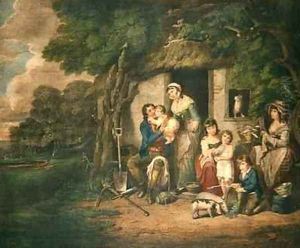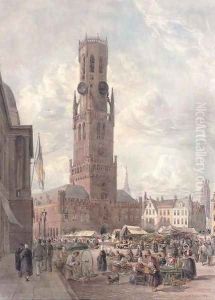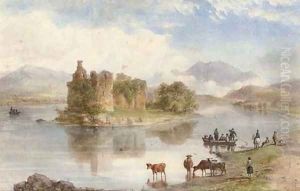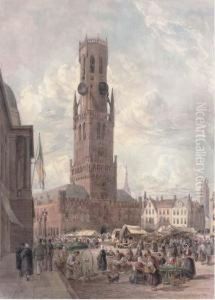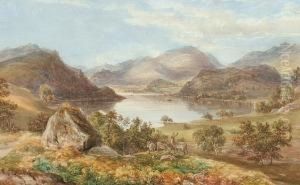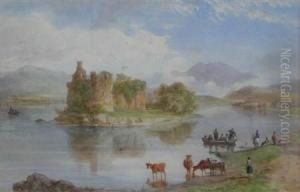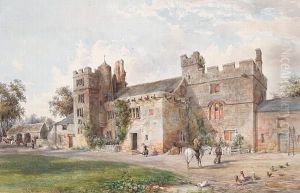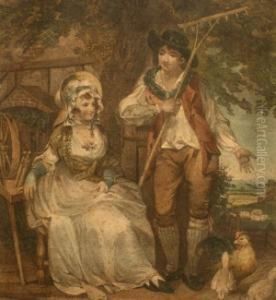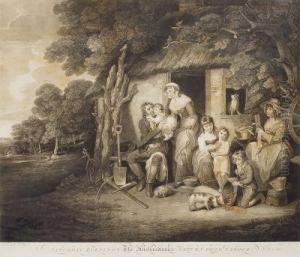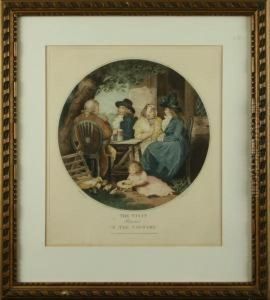William Nutter Paintings
William Nutter was a British engraver, born in 1754. Little is known about his early life and training, but he is recognized for his contribution to the art of stipple engraving, which became popular in the late 18th century. Stipple engraving is a technique that uses dots to create an image, rather than lines, which allows for a softer gradation of tone and a more delicate rendering of features, particularly useful in portraiture.
Nutter worked in London, where he produced engravings after paintings by renowned artists of the time such as Sir Joshua Reynolds and Henry Fuseli. His works include subjects ranging from portraits to decorative prints and illustrations for books. Nutter was skilled at translating the painterly qualities of the original artworks into his engravings, maintaining the essence and character of the source material.
Despite the quality of his work, William Nutter did not achieve significant fame during his lifetime. He worked during a period when numerous talented engravers were active, which might have overshadowed his contributions. Nevertheless, his engravings were appreciated by connoisseurs and collectors for their elegance and fidelity to the originals.
William Nutter's career was relatively short-lived, as he died in 1802. His body of work remains as a testament to the skill and craftsmanship of late 18th-century printmaking. His engravings continue to be of interest to those studying the period and the techniques of stipple engraving.
